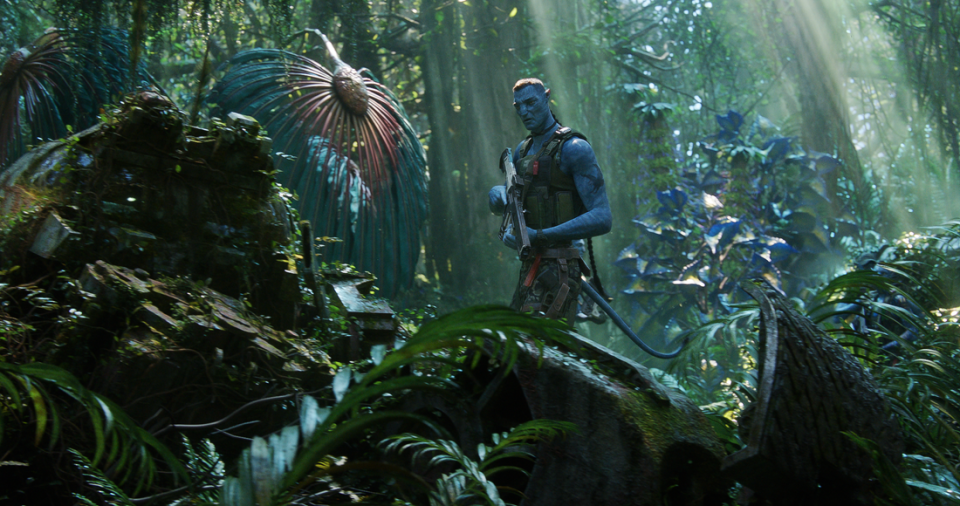A Moviegoer’s Guide to the Many (Many) Ways to See ‘Avatar: The Way of Water’ in Theaters

As early reactions to “Avatar: The Way of Water” roll in, one thing is abundantly clear: James Cameron’s long-gestating sequel is a visual masterpiece that deserves to be seen on the biggest screen possible. But you’re not alone f you’re not sure what screen that is,
The film is being rolled out in a variety of digital formats, with both 2D and 3D options available. The first “Avatar” marked the beginning of something resembling a creative heyday for 3D filmmaking, with films like “Hugo,” “Goodbye to Language,” and “Jackass 3D” going on to demonstrate the creative potential of the medium. But mainstream 3D filmmaking never quite caught on to the extent that people believed it would after “Avatar,” and it has become increasingly rare for a major new release to be screened in 3D, let alone shot with 3D viewing in mind. But “Avatar: The Way of Water” is precisely that.
More from IndieWire
James Cameron: 'Every Take Is a Blank Slate' in the Virtual World of 'Avatar'
'Avatar: The Way of Water' Opening Box Office: Why Projections May Be Too Low
There are various factors to consider when comparing formats, but the main points of differentiation are 3D, frame rate, and theater quality.
3D vs. 2D
Perhaps more than any other film in recent memory, “Avatar 2” was specifically designed to be viewed in 3D. While there are 2D screenings available at most theaters, it is by far the most visually limiting option. It is highly recommended that anyone with access to a 3D screening see it that way unless you have a medical condition that prohibits it.
The most common 3D formats are RealD 3D, Dolby 3D, and IMAX 3D. RealD is generally considered the least desirable option (though it’s still preferable to 2D) due to concerns about color clarity. Dolby and IMAX ultimately come down to preference, with the consensus being that Dolby offers better picture quality, but the larger screens can often make IMAX a better viewing experience.

Walt Disney Studios Motion Pictures / Courtesy Everett Collection
High Frame Rates
If you see the movie in 3D, your options open up considerably. There are a variety of 3D screening formats, and the differences between them are essentially a matter of frame rate. Most films are shot at a frame rate of 24 frames per second, but Cameron doubled that for many sequences in “Avatar 2,” shooting at 48fps.
That gives the film a smoother effect that is often compared to video games, though other filmmakers have notably experimented with high frame rates in films like “Gemini Man” and Peter Jackson’s “The Hobbit” trilogy.
Because it is still such a niche technology, not every theater can screen films in 48fps. Some will still present it in a standard 24fps format, inevitably leading to some of the depth being lost. “Avatar 2” was shot in multiple frame rates, primarily using 48fps for action and underwater sequences and a more traditional 24fps for simpler scenes. But it’s important to note that projectors cannot alternate between frame rates during a screening. So a high-frame-rate screening of “Avatar 2” will project the entire film in 48fps, and the scenes shot in 24fps will simply show each frame twice (though that is not something that would be noticeable to a viewer). Screenings in theaters not equipped to project in 48fps will simply show the entire film in a standard frame rate of 24fps, which means that many of the most visually impressive scenes will not be presented the way Cameron intended them.
So for the most immersive experience, look for a showing that mentions a high frame rate (often abbreviated to HFR) or specifies that the theater uses single laser technology. Some theaters use older projectors featuring dual lasers, which offer slightly higher picture quality but do not allow 48fps projection. Single laser screenings will offer a very minuscule decline in picture quality, but most experts believe that the ability to watch action scenes at their intended frame rate is a trade-off worth making.

Courtesy of 20th Century Studios
IMAX vs. Other Premium Formats
Beyond that, the only other thing to consider is premium format options. IMAX theaters are still the biggest and loudest options, presenting the film on the largest possible screen with a premium sound system. The original “Avatar” was the highest-grossing IMAX film of all time even though there were only roughly 300 IMAX screens in the world at the time.
That number has increased considerably in the subsequent 13 years, and “Avatar 2” will be the widest IMAX release of all time when it opens on over 1,500 IMAX screens worldwide. But that rapid expansion has been possible because not all IMAX screens are equal. Many multiplexes feature theaters labeled with the IMAX branding but are much smaller than original IMAX screens (even if they are larger than a standard screen). “Real” and “fake” IMAX screens are labeled the exact same way, so it takes a bit of research to figure out which one you’re seeing. Cinephiles who want to see the film on the largest possible screen should seek out an IMAX theater playing the film in a 1.43 aspect ratio rather than 1.9, such as the AMC Lincoln Square in New York City or the AMC Universal CityWalk in Los Angeles.
After that, Dolby Cinema screens are the second highest quality option (though both IMAX and Dolby screenings will cost more due to the third-party maintenance that those theaters require). Many of those theaters are also equipped with single laser technology that will allow the film to be viewed at high frame rates. Many large AMC multiplexes feature theaters equipped with Dolby Cinema.
Our Recommendation
While the showing you select is ultimately a matter of personal preference and availability, the consensus is that the highest quality way to experience “Avatar: The Way of Water” is an IMAX 3D screening with single-laser technology. This experience is offered at large theaters in many major markets, including the AMC Lincoln Square in New York City and the AMC Burbank and AMC The Grove in Los Angeles.
Additional reporting by Tom Brueggemann.
Best of IndieWire
New Movies: Release Calendar for December 16, Plus Where to Watch the Latest Films
Sundance 2023 Movie Deals So Far: Paramount and Netflix Bite First
Sign up for Indiewire's Newsletter. For the latest news, follow us on Facebook, Twitter, and Instagram.

 Yahoo News
Yahoo News 
